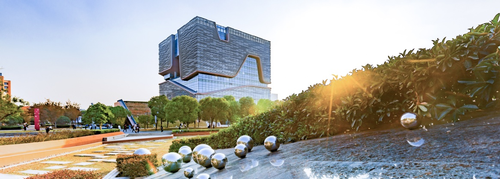TUESDAY, JULY 18, 2023
A study from Xi’an Jiaotong-Liverpool University and Nanjing University has recently suggested to use a “reverse” passive design approach for building sustainability.
According to the universities, using a building optimization software before creating the initial passive design strategy of a building would allow architects to take advantage of the climate, surroundings and materials available.
The paper, “Reverse passive strategy exploration for building massing design-An optimization-aided approach” was published earlier this year in Sage Journals.
About the Approach
Dr. Likai Wang, corresponding author of the paper and Assistant Professor at XJTLU’s Department of Architecture, said this approach reverses the traditional design process where the optimization usually comes after the strategy, to one where the strategy can emerge from the result of computational optimization.
“We aim to overcome the limitations of the manual trial-and-error exploration process which takes longer and often makes the design process inefficient and ineffective,” he explained.
“Architects can screen out promising passive design strategies according to how well each optimization result fits the purpose, which is very helpful in the early stage of building design.”
The researchers reportedly used EvoMass, a plugin for the popular 3D modelling software Rhino-Grasshopper, to generate and optimize building design.

 |
| Xi’an Jiaotong-Liverpool University |
|
A study from Xi’an Jiaotong-Liverpool University and Nanjing University has recently suggested to use a “reverse” passive design approach for building sustainability. |
“EvoMass can be configured according to the designer’s massing requirements such as maximum building height and gross floor area limit, and performance goals like daylighting and solar exposure,” said Wang.
“Unlike the conventional computational optimization method where the optimized design is typically the final result, in our workflow, it serves as a medium for design exploration and reflection.”
According to the release, the intention of the study is to bridge the gap between the practical need from architects and research of design optimization for improving a building’s performance, as well as apply computational optimization to current sustainability practices in architecture.
“The proposed approach produces relatively abstract information rather than specific designs related to passive design strategies, which gives architects sufficient freedom to combine it with other performance factors and design considerations, and may further mobilize their creative thinking for novel solutions,” Wang said.
“Currently, we’re developing a design platform that combines EvoMass with an evaluation server connected to the internet, aiming to provide architects with a more user-friendly and integrated design environment in real-world design scenarios.”
Additional authors of the paper included Professor Guohua Ji, Ting Luo and Tong Shao from Nanjing University.
“In building massing design, using passive design strategies is a critical approach to reducing energy consumption while offering comfortable indoor environments,” wrote the authors in the abstract. “However, it is often impractical for architects to systematically explore passive design strategies at the outset of the building massing design and architectural form-finding processes, which may result in inefficient or ineffective utilization of the strategies.
“To address this issue, this study presents a reverse passive design strategy exploration approach that leverages the capability of computational optimization and parametric modeling to help architects identify feasible passive design strategies for building massing design.”
The paper also presents two case studies related to daylighting, sky exposure and solar heat utility are presented to demonstrate the approach, and the relevant utility and limitations are discussed.
Tagged categories: Building design; Building design software; Colleges and Universities; Color + Design; Color + Design; Design; Design - Commercial; Design build; Green building; Program/Project Management; Projects - Commercial; Research and development; Sustainability; Technology